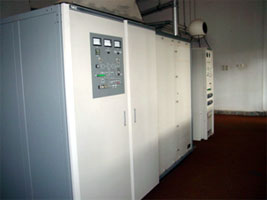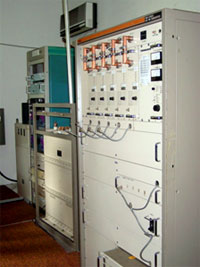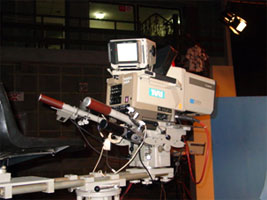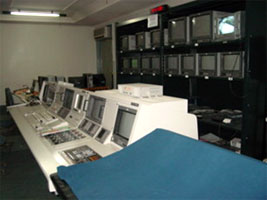
| ENGLISH |  |
BAHASA INDONESIA |  |
日本語 |
|
Loan Aid Projects regarding Broadcasting Sector
Period : Loan Aid projects (Implemented 13 times from December 1973 to December 1995 (the time of contracts)). Place: All the islands and territories of Indonesia including Jakarta (Nationwide) Amount Provided: Total 37,028 billion yen (source: Website of Japan Bank for International Cooperation) Purpose:
Outline: On the other hand, with regard to TV broadcasting, TVRI, a government owned TV station, was founded in August 1962 to broadcast the 4th Asian Games held in Jakarta in the same year. But full-scale broadcasting started only in January 1963. Later on in 1965, a TV studio was constructed in Yogyakarta, which was followed by the construction of the microwave network to transmit TV programs in Jakarta, Yogyakarta and Surabaya. This enabled broadcasting from eight stations within Java in the end of the 1960s. Around this time, Indonesia entered the age of stable growth both politically and economically, and in 1969, the five year national development plan was launched. The Indonesian government drew up a national development plan called “the first five year plan” which is aimed at, among other things, developing human resources by spreading the Indonesian language and education in every corner of the vast country made up of many islands. And the government submitted its plan to expand broadcasting networks to IGGI, the Inter-Governmental Group on Indonesia, in December 1970. In order to realize this plan, the Japanese government provided loan aid as part of its economic coorporation to Indonesia and went on to expand radio and TV broadcasting networks throughout the country. As Indonesia was earning a comfortable income from oil in the 1970s, it worked to improve the broadcasting networks of RRI and TVRI using buyers’ credit from countries including France, West Germany, England and Holland. Subsequently, along with a series of five year development plans, broadcasting sector and networks were improved and expanded: in radio broadcasting, spreading short wave to medium wave and FM broadcasting as well as installment of regional Radio stations; and in TV broadcasting, change from black and white to color broadcasting and building studios at regional stations so that they can broadcast local programs of the region. The Japanese government also assisted in the broadcasting sector by providing loan aid as part of its economic cooperation to Indonesia.
|





 Return Top
Return Top